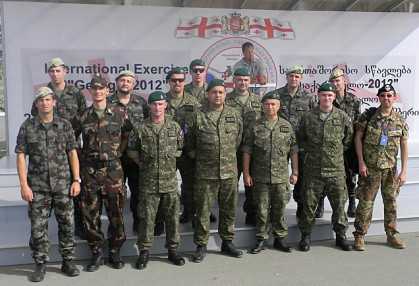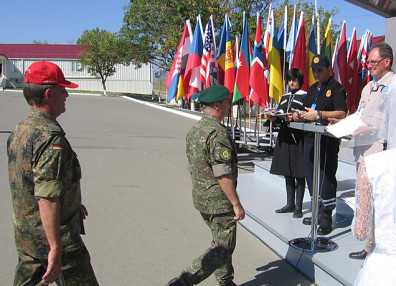After an Earthquake
Szöveg: Maj. Attila Láng | 2012. november 15. 8:21The annual consequence management field exercise organized by the Euro-Atlantic Disaster Response Coordination Centre (EADRCC) was held on a military range in the vicinity of Tbilisi, Georgia.
This year for the first time, in addition to the specialist of the cooperating states, the NBC Joint Assessment Team (NBC JAT) of the NATO Response Force (NRF) Combined Joint CBRN Defence Task Force (CJ-CBRND-TF) also participated in the exercise. The NBC JAT is manned by the personnel of the HDF Görgei Artúr NBC Area Control Center.

A main objective of the exercise – in which the Emergency Management Department of the Ministry of Internal Affairs of Georgia (LEFA) also represented itself – was to improve cooperation between multinational forces and international organizations working in the field of disaster relief.
The scale of the exercise is shown by the fact that it involved around 1,000 specialists from 35 nations working together. Fourteen nations and organizations participated with teams of different specialties like CBRN defence, search and rescue, water rescue, firefighting, medical support and technical assistance; another 13 participated with staff support, and eight sent only observers to the exercise.
According to the exercise scenario, an earthquake hit a central part of Georgia, with the epicentre located in the Kvemo Kartli region. The magnitude was estimated to be 6,8 on the Magnitude Moment Scale. Tremors were felt in the capital Tbilisi and minor damages were observed. The closest town to the epicentre and the most densely populated urban area is Rustavi with a population of over 110,000 people, where hospital, railway line, oil pipeline, chemical plants and steel manufacturing factories are located. The earthquake and its impact claimed 45 fatalities and over 500 people were injured.

Following the earthquake, the Emergency Management Directorate of the Ministry of Internal Affairst sent specialist teams to assess the damage and direct consequence management activities. Municipal services have established a local emergency management agency (LEMA) to coordinate the rescue and the consequence management operations. Due to the large number of refugees and the extensive damage caused by the earthquake, the Ministry of Internal Affairs of Georgia requested international assistance – through the NATO and UN organizations for coordination of humanitarian assistance – from the Euro-Atlantic Disaster Relief Coordination Center (EADRCC) and the United Nations Office for Coordination of Humanitarian Affairs (UN OCHA). The exercise scenario included the assessment of consequences of radioactive contamination arising from damaged hospital equipment, fire in a chemical plant as well as ammonia and chlorine release. In the course of the assessment, the local coordinating organ formulated a proposal for the consequence management and the decontamination process as well as for the safety regulations to be observed during the rescue and consequence management operations.
Concurrent with the assessment tasks, the disaster response rescue teams were conducting SAR and reconnaissance missions in the ruinous buildings located next to the venue of the exercise.